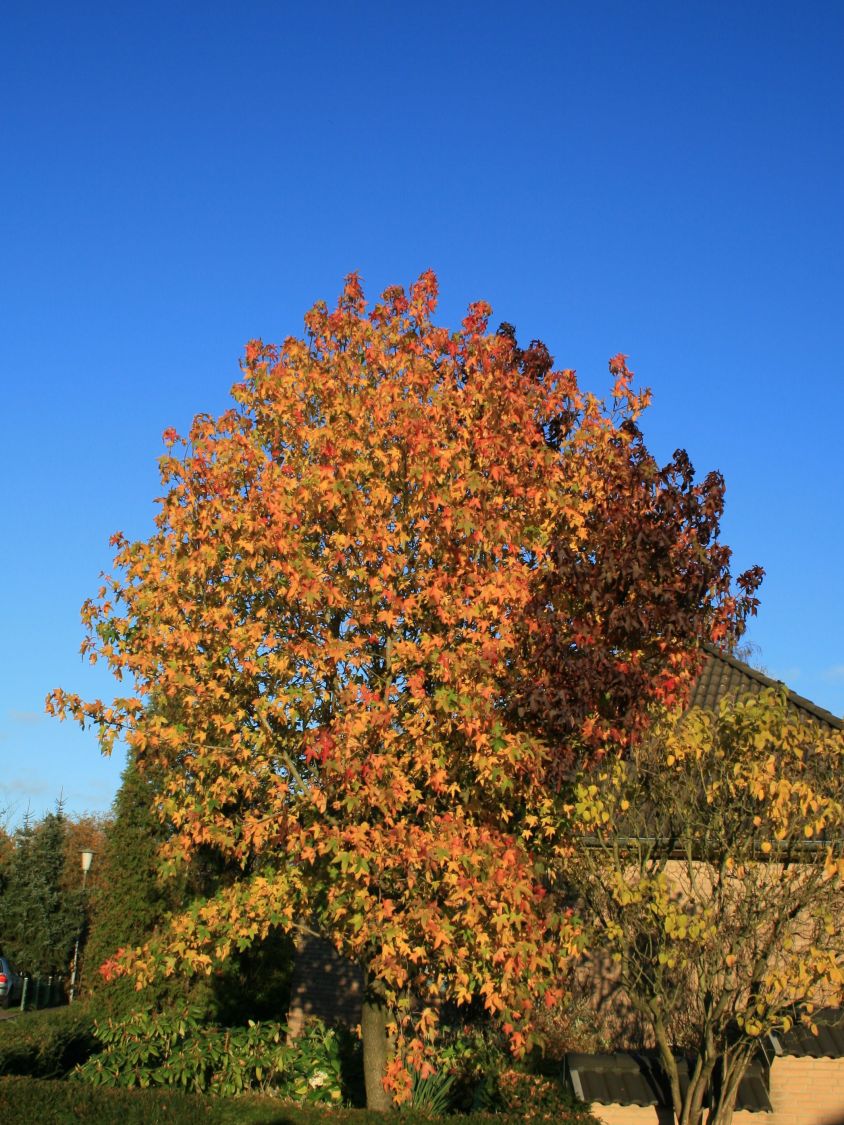
Amberbaum Liquidambar styraciflua Baumschule Horstmann
Liquidambar styraciflua has some common insect problems: Hickory Horned Devil \ Regal Moth Redbanded Thrips on Ornamental Plants Twig Pruner Wood Boring Beetles in Trees Ambrosia Beetle Pests of Nursery and Landscape Trees Liquidambar styraciflua has some common disease problems: Common Disease Pests of Maple in North Carolina
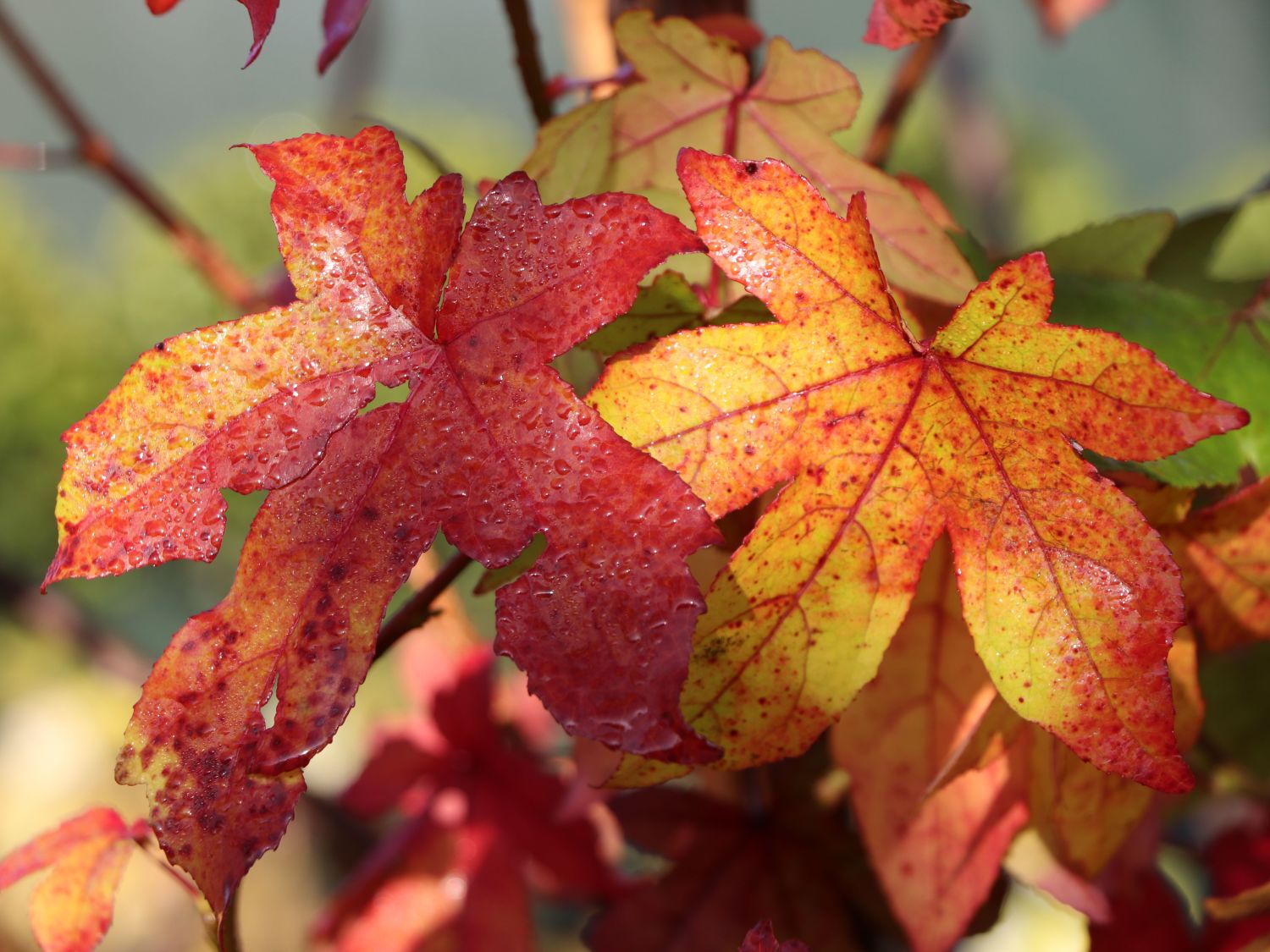
Amberbaum Liquidambar styraciflua Baumschule Horstmann
Herkunft. Der Säulen-Amberbaum (Liquidambar styraciflua 'Slender Silhouette') ist eine neuere, wie ihr Name schon verrät, säulenförmige Variante des Amerikanischen Amberbaums.Sie wurde um 1980 von einem Baumschulbesitzer in Tennessee als Zufallssämling in der Nähe einer Bahnstrecke entdeckt und von ihm in den Markt eingeführt.
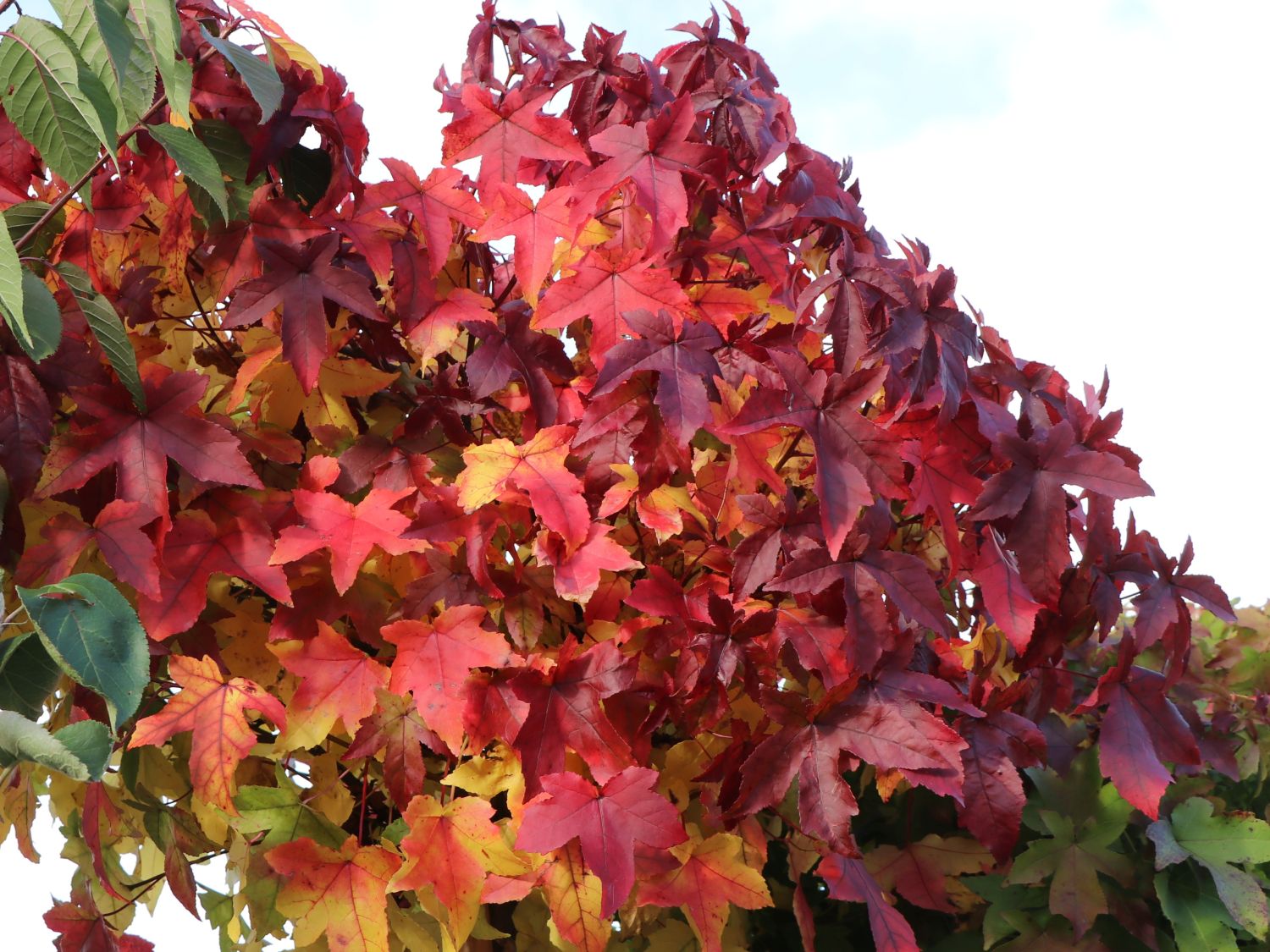
Amberbaum 'Gumball' Liquidambar styraciflua 'Gumball' Baumschule Horstmann
Common name: American Sweetgum Pronunciation: li-kwid-AM-bar sti-ra-si-FLOO-a Family: Hamamelidaceae Genus: Liquidambar Type: Broadleaf Native to (or naturalized in) Oregon: No Broadleaf deciduous tree, 60-75+ (150) ft [18-23 (45) m] high, pyramidal to oblong crown (excurrent). Stems rounded to somewhat angled, often developing corky wings.

Amberbaum Liquidambar styraciflua Baumschule Horstmann
Position. Liquidambar styraciflua (sweet gum) originates from eastern USA and was originally introduced to the UK in the seventeenth century. It's one of the best trees for autumn leaf colour. As temperatures fall in autumn, its large, lobed, maple-like leaves turn from green to glowing shades of orange, red, yellow, or purple. The species is a.
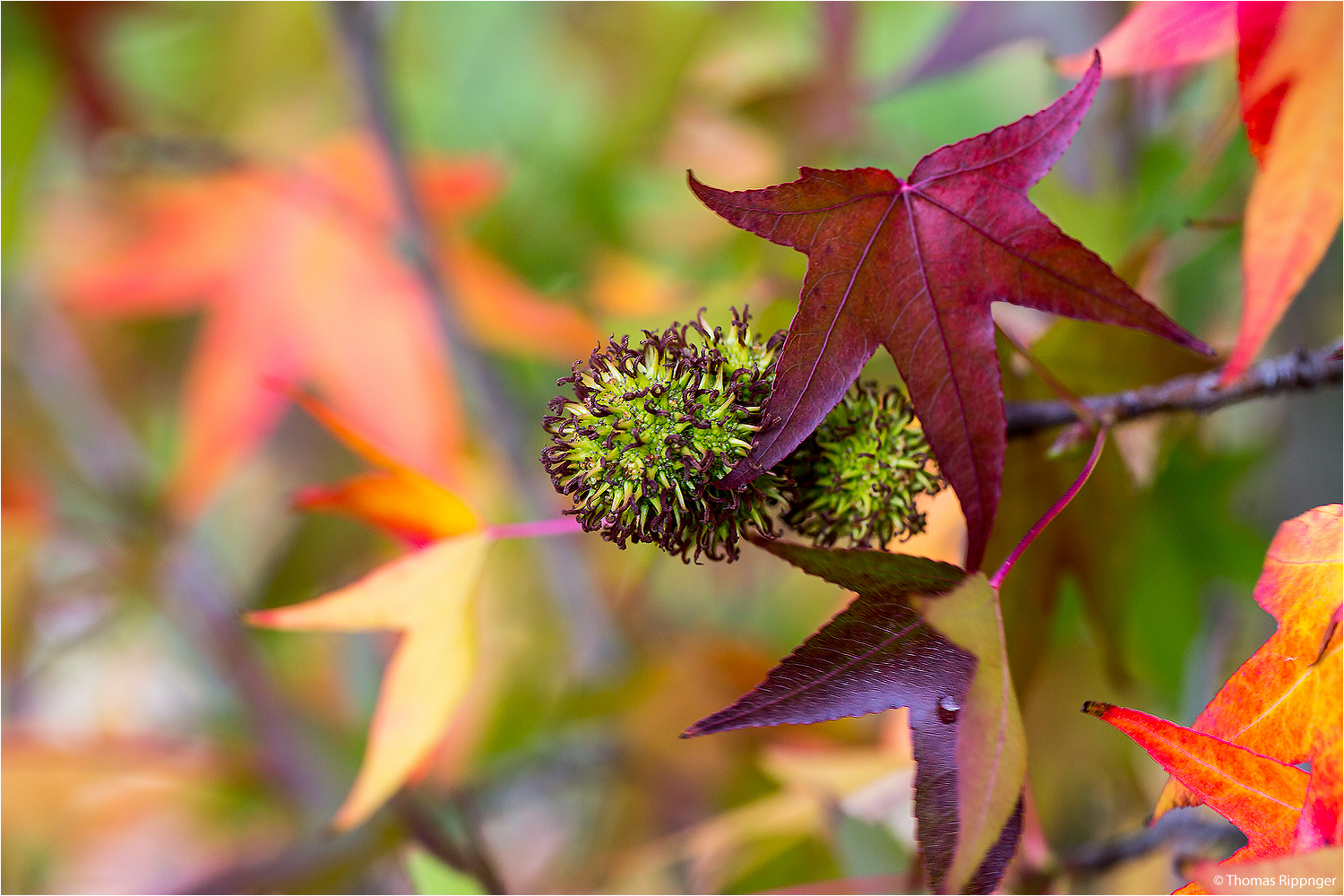
Amerikanischer Amberbaum (Liquidambar styraciflua). Foto & Bild pflanzen, pilze & flechten
Grows up to 60-80 ft. tall (18-24 m) and 40-60 ft. wide (12-18 m) A full sun lover, this plant is easily grown in deep, medium moisture, acidic, well-drained soils. Tolerant to a variety of soil conditions, including dry soils, wet or permanently moist soils, but dislikes alkaline soils. Perfect as a specimen plant.
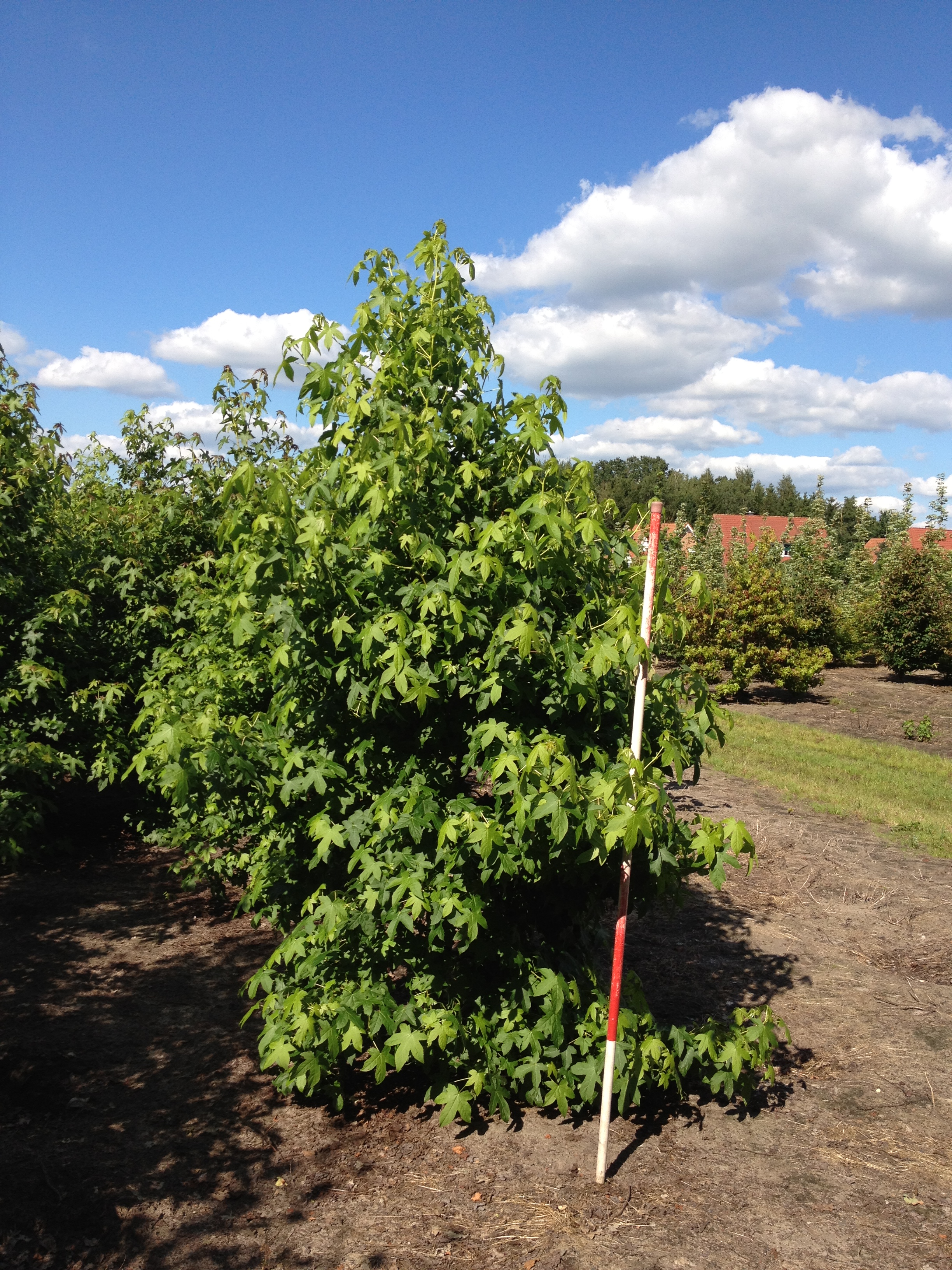
Amerikanischer Amberbaum (Liquidambar styraciflua) 250300 cm kaufen und bestellen!
Grows up to 30-50 ft. tall (9-15 m) and 25-40 ft. wide (8-12 m) A full sun lover, this plant is easily grown in deep, medium moisture, acidic, well-drained soils. Tolerant to a variety of soil conditions but dislikes alkaline soils. Perfect as a specimen plant. Fruit can cause litter problems that detract from using this tree as a street tree.

Amberbaum 'Worplesdon' Liquidambar styraciflua 'Worplesdon' Baumschule Horstmann
Liquidambar styraciflua is a medium-sized to large tree, growing anywhere from 15-20 m (50-70 ft) in cultivation and up to 45 m (150 ft) in the wild, [13] with a trunk up 60-90 cm (2-3 ft) in diameter, on average. [14] Trees may live to 400 years. [15]
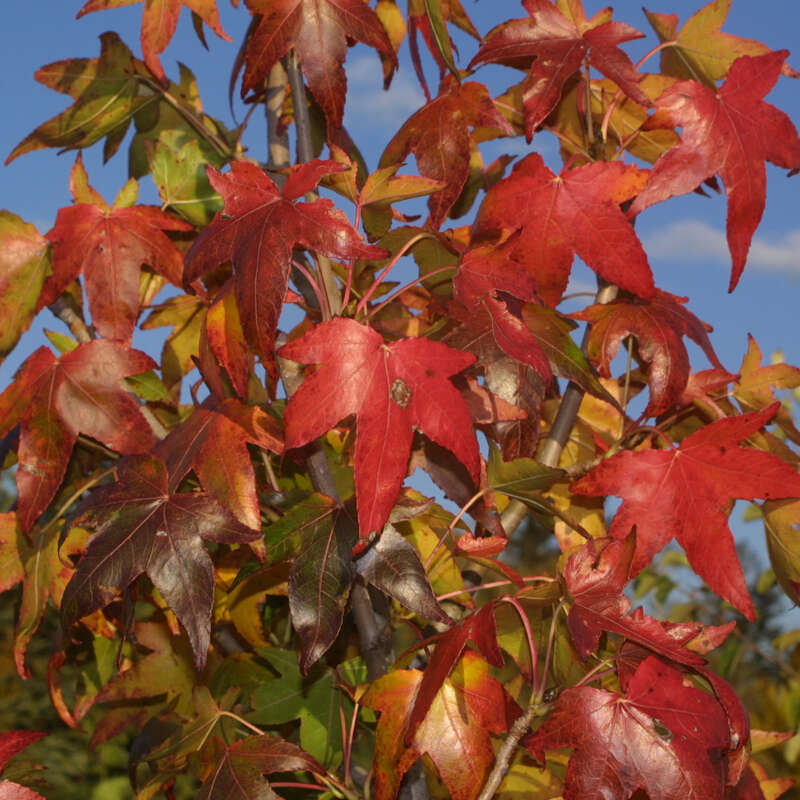
Amberbaum Liquidambar styraciflua 'Moraine'
The Amberbaums are planted in the garden in early autumn and late spring. Because especially young trees can still be sensitive to frost and cold wind, spring should be brought forward. Then has Liquidambar styraciflua enough time to grow and prepare for the winter. The following instructions indicate additional features.
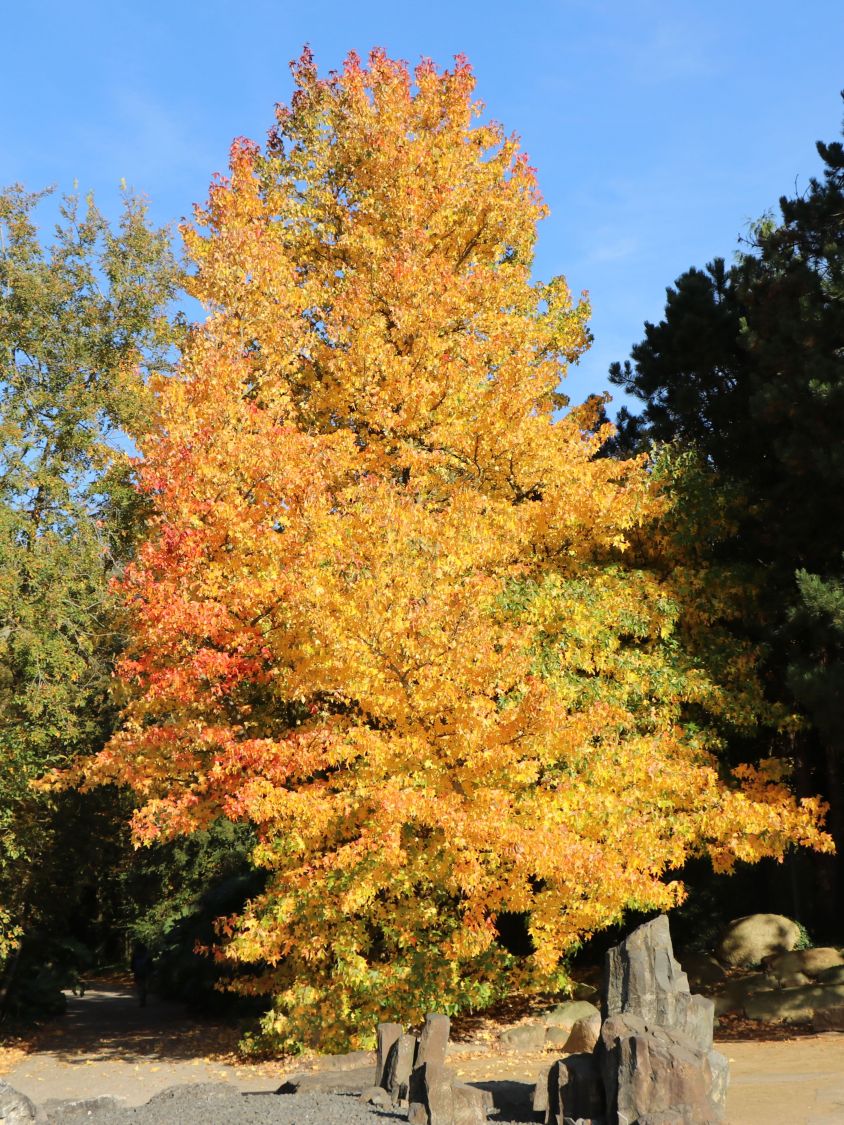
Amberbaum Liquidambar styraciflua Baumschule Horstmann
Soil. Sweetgum, Liquidambar styraciflua, is a gorgeous tree, native to North America. It bears attractive, cork-like bark and maple-like leaves which take on glorious and long-lasting autumn colours. It can reach an eventual height of 25m, so is best suited to large gardens. Liquidambar styraciflua 'Burgundy' is a rare cultivar, which develops.

Amerikanischer Amberbaum Liquidambar styraciflua Österreichische Baumfreunde
Liquidambar styraciflua, commonly called sweet gum, is a low-maintenance deciduous shade tree that is native from Connecticut to Florida and Missouri further south to Texas, Mexico and Central America. In Missouri, it typically occurs in moist low woods and along streams only in the far southeastern corner of the state (Steyermark). It.

Liquidambar styraciflua Guldenbaum, Amerikanischer Amberbaum Van den Berk Baumschulen
Quick to grow. Common name: 'Slender Silhouette' American sweetgum. Botanical name:Liquidambar styraciflua 'Slender Silhouette'. Foliage: Deciduous, star-shaped. Dark green in summer, turning yellow to deep red in fall. Flower: Inconspicuous white flowers in spring. Seed-filled, spiky-textured balls develop and drop in the fall, but not in.

Amberbaum Liquidambar styraciflua Baumschule Horstmann
Code created in: 2002-02-03 Basic information EPPO Code: LIQST Preferred name: Liquidambar styraciflua Authority: Linnaeus Notes USA (southeast), Mexico, Central America. Cultivated as an ornamental and street tree, for example in southern Europe WSSA list of weeds in North America Common names
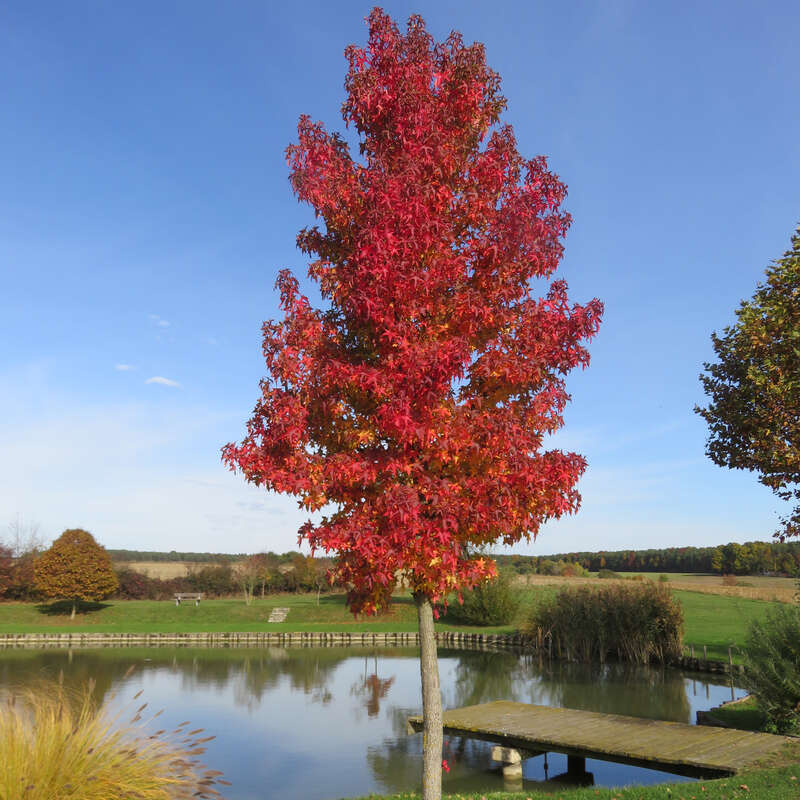
Amberbaum Liquidambar styraciflua
Der Amerikanische Amberbaum ( Liquidambar styraciflua ), auch Seesternbaum genannt, ist eine Laubbaumart aus der Gattung der Amberbäume ( Liquidambar ); diese wird in der kleinen Familie der Altingiaceae innerhalb der Ordnung der Steinbrechartigen (Saxifragales) eingeordnet.
Amberbaum Liquidambar styraciflua Baumschule Horstmann
Ein Amberbaum ( Liquidambar styraciflua) gehört zur Familie der Zaubernussgewächse (Hamamelidaceae). Der Amberbaum ist ein Laubbaum und wird durchschnittlich 45 Meter hoch. Die Blütezeit des Amberbaum ist im Mai. Die Blüten des Baumes sind grün - gelb. Quelle: Canva Steckbrief Name Der botanische Name der Pflanze lautet Liquidambar styraciflua.

Liquidambar styraciflua Guldenbaum, Amerikanischer Amberbaum Van den Berk Baumschulen
Der Amerikanische Amberbaum wird auch Storaxbaum genannt. Beide Namen rühren von dem herrlichen Geruch des Harzes und des Holzes her und werden noch genauer erläutert. Hier haben wir ein wunderschönes Exemplar in einem Park. Deutlich zu erkennen ist auch die ausladende und gleichmäßig aufgebaute Krone. Urheber: Fotograf: Wim Brinkerink
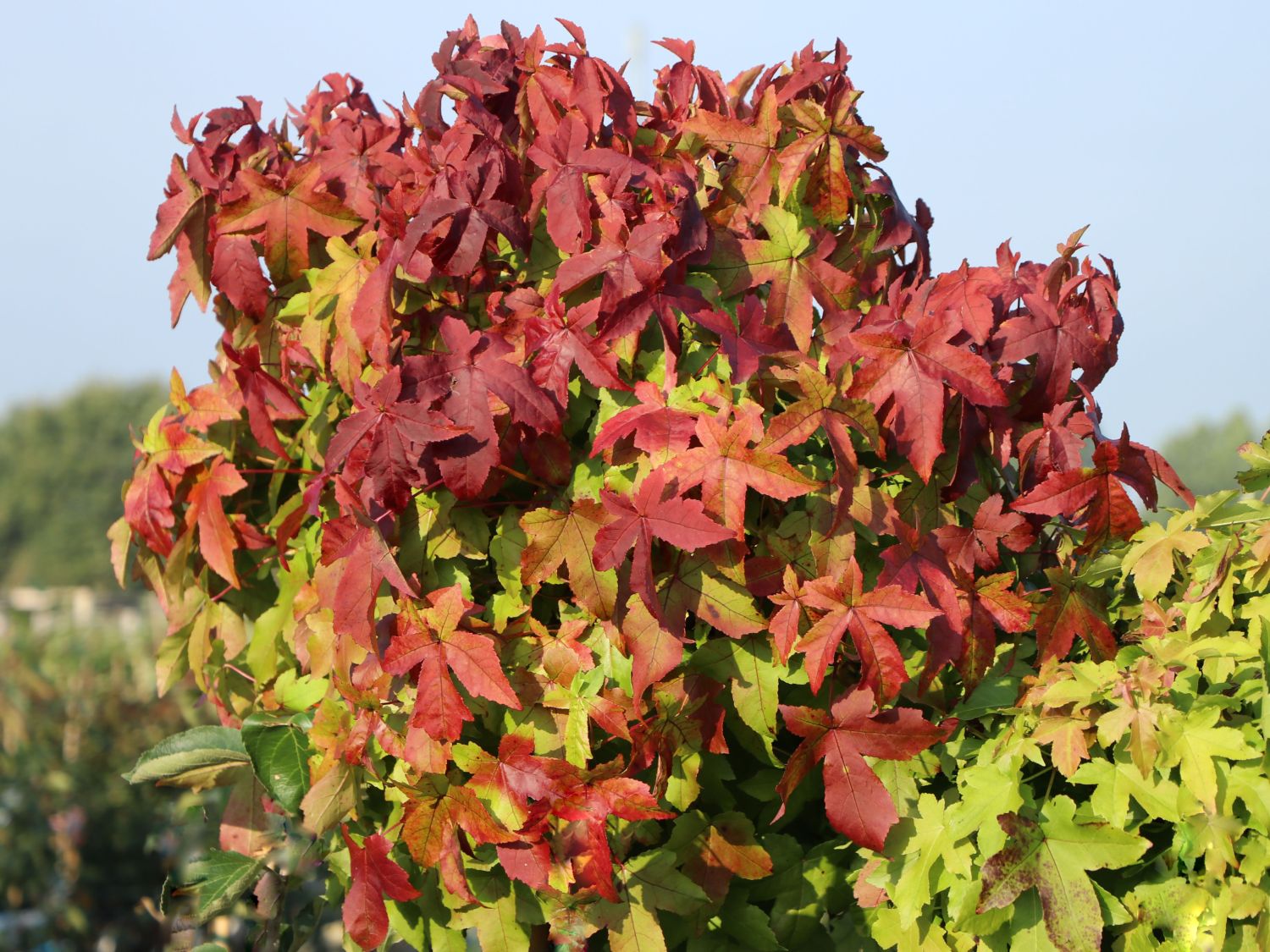
Amberbaum 'Gumball' Liquidambar styraciflua 'Gumball' Baumschule Horstmann
Liquidambar L. - Amberbaum - Hamamelidaceae, Zaubernussgewächse. Eigenschaften. In der Jugend frostempfindlich, auch bei älteren Pflanzen können in sehr strengen Wintern gelegentlich die Knospen oder 1-jährigen Triebe einfrieren, kritische Grenze dürfte bei - 28 ° C liegen, der Baum treibt dann oft erst im Juni aus den schlafenden Augen und regeneriert sich wieder gut.